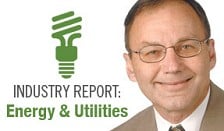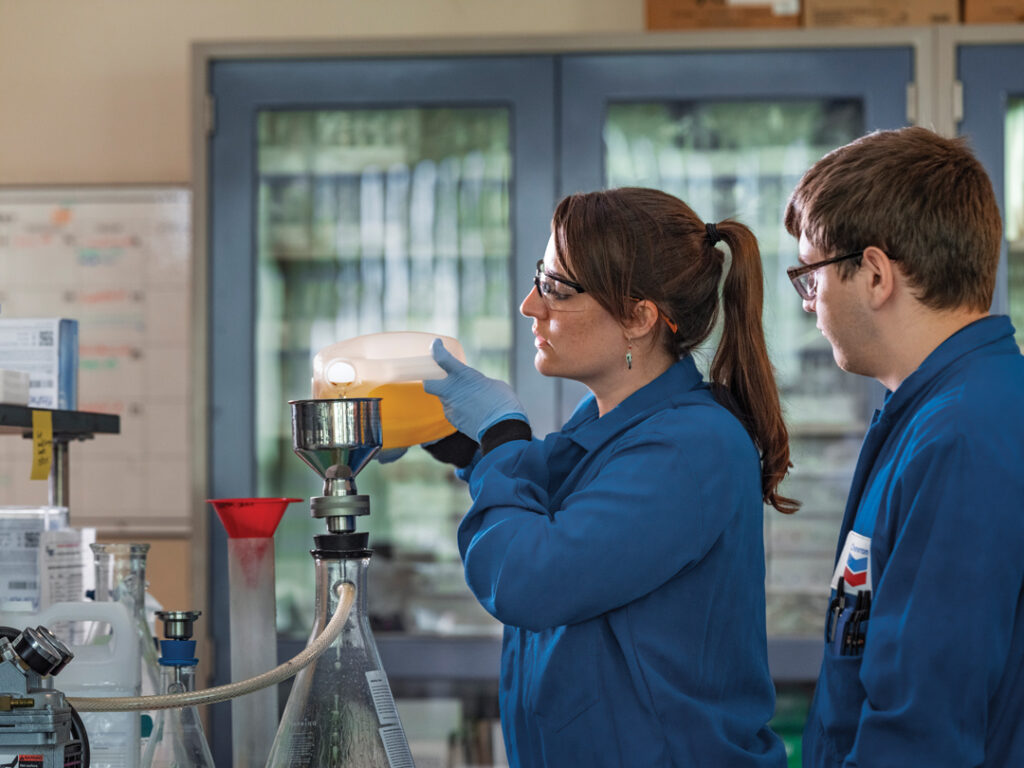Industry report: Energy & Utilities
Your QUICK Briefing on One Big Industry

Iowa Utilities Board building achieves double-digit energy savings
A combination of energy-efficient design elements and cost-saving components have made a new state office building one of Iowa’s greenest structures. The Iowa Utilities Board/Office of Consumer Advocate office building used 68 percent less energy in its first year of occupancy than a typical office building its size would use, according to its Kansas City, Mo.-based design firm, BNIM Architects.
“The most interesting thing about that project is that the owners set the goals from the outset,” said Rod Kruse, a principal with BNIM. “In every decision we made, the energy-consumption aspects of the building were considered.”
Built at a cost of $10.1 million, the high-efficiency building is considered “net-zero ready,” meaning it’s feasible that all of the building’s annual energy costs could eventually be offset by renewable energy systems. Currently, rooftop photovoltaic cells mounted on the roof supply 18.5 percent of the building’s energy needs.

The incremental cost of building in the energy-efficient features — less than $145,000 — will pay for themselves in less than five years, noted Carey Nagle, a BNIM architect who helped lead the project.
Nagle said his firm is currently designing an office building for a client in San Diego that will implement many of the Utilities Board building’s energy-saving strategies. “I think once people start to see how favorable the paybacks are, it certainly makes economic sense to do it,” he said.

A team of Iowa State University professors is working on a new approach for scheduling and pricing wholesale electric power. Their goal is to help electricity market managers meet energy demands in the face of new uncertainties arising from the growth of renewable resources such as wind and solar power.
Sarah Ryan, professor of industrial and manufacturing systems engineering, is heading up the research effort for ISU, which received a $1.7 million Department of Energy grant and will serve as the lead institution for the two-year study. Other participants include Sandia National Laboratories; University of California, Davis; Alstom SA; and the Independent System Operator New England. The intended users of the new formulation are seven U.S. wholesale electric power markets, which collectively handle more than 60 percent of the nation’s generation capacity.
Bringing generators online or off-line can take several hours; current scheduling methods use single-number forecasts for demand and renewable generation for each hour of the next day.
“This is like deciding whether to go on a picnic based on a weather forecast that only says, ‘Yes, it will rain’ or ‘No, it will not rain,’” Ryan said. “You can make a better decision, understanding the risks, if you know there’s a 60 percent chance of rain. We are building information about the uncertainty of demand and renewable generation into optimization methods that can use that information.”
With more precise modeling, the industry can rely more on less costly slow-start generators and reduce the use of more expensive fast-start generators, she said.
Working with Ryan are Dionysios Aliprantis, assistant professor of electrical and computer engineering, and Leigh Tesfatsion, professor of economics, mathematics and electrical and computer engineering.
With the cost of producing electricity in the billions of dollars annually, shaving a few percentage points off that total will make a significant difference, Ryan said. It could also lead to broader economic benefits. “Once we create an integrated power grid that makes the best use of alternative energy sources, I think you’ll see jobs and industries grow as a result,” she said.
Regional utilities conference coming to Des Moines

“It’s very difficult in state government to send public officials and staff members to meetings out of state,” Hanson said. “But these conferences can be incredibly valuable. When we are able to host MARC, it becomes much more affordable. Also, we have groups like the rural electric co-ops and independent telephone companies that will find it much easier to send their staffs to this meeting.”
Among the topics that will be discussed are U.S. Environmental Protection Agency’s new air and water quality rules for electrical generating plants. “Here in the Midwest where we depend very heavily on coal-fired power plants, these rules will have much more of an impact than other parts of the country,” Hanson said. “We are fortunate that we are going to have a high-level official from EPA here to discuss this.”
Other significant topics will include a recent Federal Communications Commission order dealing with fees that long-distance telephone service providers pay to local telephone companies to originate and terminate calls. Federal Energy Regulatory Commission (FERC) member John Norris will be on hand to discuss national and regional issues, among them a recent FERC order dealing with electric transmission policy. Gov. Terry Branstad, who chairs the Midwestern Governors Association and is co-chair of the Governors Wind Energy Coalition, is the invited speaker for the Iowa luncheon during the event. Additionally, Bob Baur, chief global economist for Principal Global Investors, will provide his insights on the economic and financial forces that affect utilities and their customers.
“We also want to showcase Iowa,” Hanson said, noting that field trips have been arranged for participants to tour facilities such as the Lincolnway Energy LLC ethanol plant in Nevada.
To register for the meeting, visit www.marc-annualmeeting.org.









